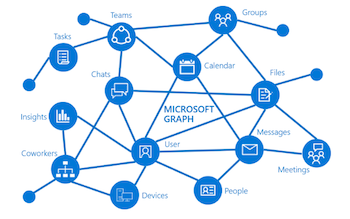 The past couple of weeks have seen a flurry of announcements in what Opus Research has dubbed the metabot space. As usual, Amazon has taken the spotlight with its launch of the Amazon Show and new support for free messaging and calling. But Microsoft leveraged its Build conference to remind us that Cortana has powerful capabilities for the enterprise.
The past couple of weeks have seen a flurry of announcements in what Opus Research has dubbed the metabot space. As usual, Amazon has taken the spotlight with its launch of the Amazon Show and new support for free messaging and calling. But Microsoft leveraged its Build conference to remind us that Cortana has powerful capabilities for the enterprise.
As David Pierce of Wired noted, the Seattle-based software giant showed at Build that it is no longer hung up about whether you’re using a Windows device. Instead they see huge potential for Cortana as the intelligent assistant that can provide seamless integration between all your devices and information sources.
Microsoft highlighted its Graph technology. The Graph is a structure stored in the cloud that identifies connections between people and the productivity objects they use. Connections can be in the form of groups a person belongs to or his / her position with an organizational hierarchy. The documents or spreadsheets a person is working on, calendar entries or connected devices all represent relationships in the Graph.
As an intelligent assistant, Cortana can leverage the information in the Graph to create a seamless, helpful experience for people, especially for those who use multiple devices throughout the day (i.e. the vast majority of us). These are services that Alexa, Google Assistant, and other metabots aren’t likely to replicate anytime soon.
Amazon must sense that the competition, in the form for Google Home / Assistant, Microsoft Cortana, Apple Siri, Samsung Bixby, are all hot on Alexa’s heels. They continue to stay one step ahead. This past week they broke out of the voice-only VUI experience to launch Amazon Show. Alexa is now multimodal, which may address some of the challenges of skill discoverability and usability. Now developers are challenged with charting new territory and determining how best to augment their voice-only skills with meaningful visuals.
Amazon also added the ability for Alexa-device owners to call or message other Alexa-device owners. A security flaw was recently uncovered that may discourage early adopters. Once the flaw if fixed, chances are good that the ability to message and voice call other Alexa-device owners will be a popular feature.
 As the team at Alexa skill prototyping service Sayspring noted, the new calling feature has prompted Amazon to add notifications to the Alexa Voice Service. Notifications is a feature that developers have been dreaming about since the dawn of the platform. Third-party developers still don’t have access to notifications, but once they do, the variety and usefulness of Alexa skills is likely to explode. Sayspring notes the possibility of skills such as reminder notifications in senior care or in office environments and even asynchronous social gaming, which relies on notifications to let people know when someone else is ready to play or when it’s their turn.
As the team at Alexa skill prototyping service Sayspring noted, the new calling feature has prompted Amazon to add notifications to the Alexa Voice Service. Notifications is a feature that developers have been dreaming about since the dawn of the platform. Third-party developers still don’t have access to notifications, but once they do, the variety and usefulness of Alexa skills is likely to explode. Sayspring notes the possibility of skills such as reminder notifications in senior care or in office environments and even asynchronous social gaming, which relies on notifications to let people know when someone else is ready to play or when it’s their turn.
In addition, Amazon has started paying the developers of top game skills via its newly launched Rewards for Skill Developers program. The incentive of monetary rewards is sure to draw in and retain top developers to the Alexa platform.
The metabot space continues to rapidly evolve. It’s clear that all the major technology players don’t want to be crowded out. Brands are encouraged to keep their eye on new developments, while beginning or continuing development of experimental skills for deployment on metabot platforms.
Categories: Conversational Intelligence, Intelligent Assistants, Articles, Mobile + Location

 Opus Research Welcomes Ian Jacobs as VP and Lead Analyst
Opus Research Welcomes Ian Jacobs as VP and Lead Analyst  United Airlines, TXU Energy, and Memorial Hermann Among Opus Research’s 2024 Conversational AI Award Winners
United Airlines, TXU Energy, and Memorial Hermann Among Opus Research’s 2024 Conversational AI Award Winners  Views from the NICE Analyst Summit: Introducing the Experience Continuum
Views from the NICE Analyst Summit: Introducing the Experience Continuum  Opus Research Announces 2023 Conversational AI Award Winners
Opus Research Announces 2023 Conversational AI Award Winners